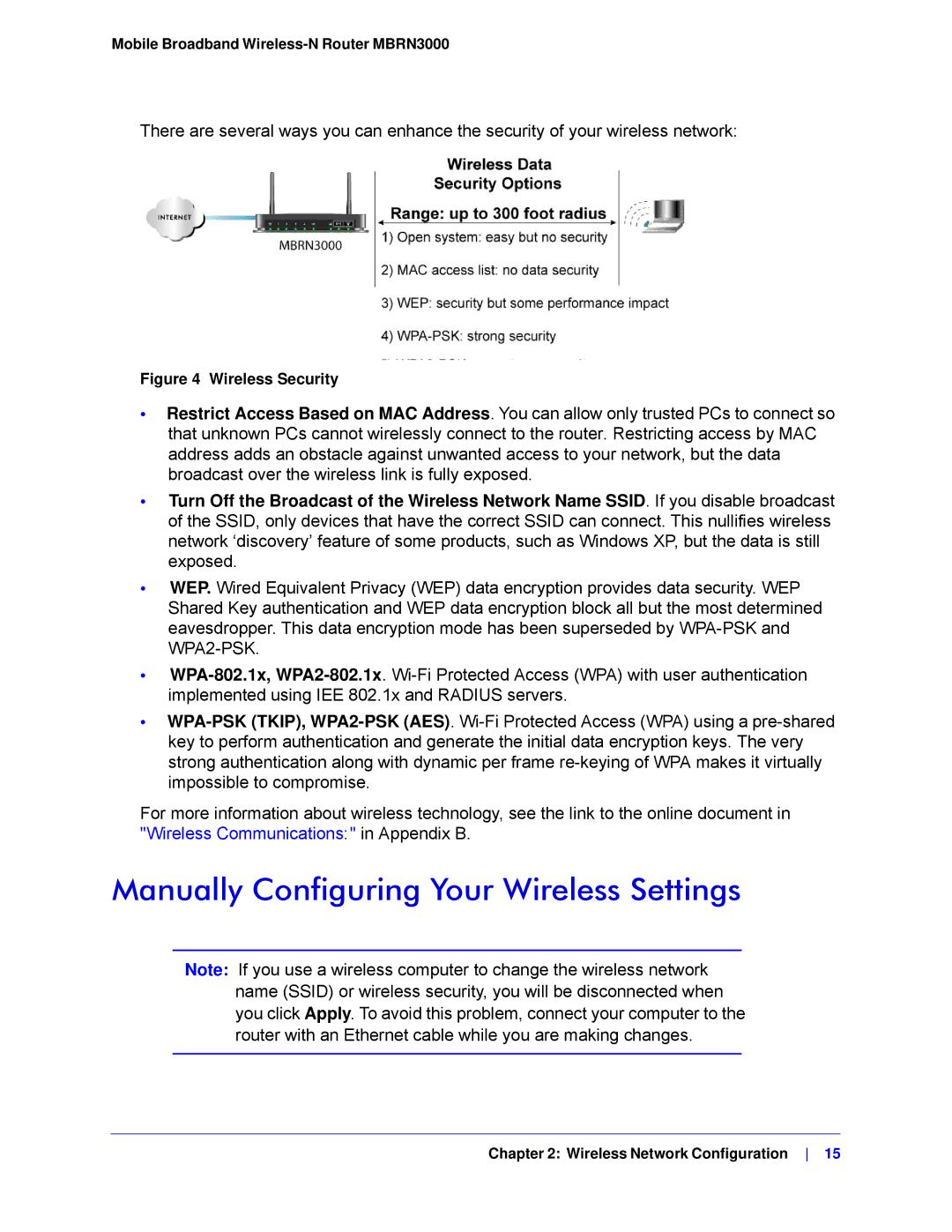
Mobile Broadband Wireless-N Router MBRN3000
There are several ways you can enhance the security of your wireless network:
Figure 4 Wireless Security
•Restrict Access Based on MAC Address. You can allow only trusted PCs to connect so that unknown PCs cannot wirelessly connect to the router. Restricting access by MAC address adds an obstacle against unwanted access to your network, but the data broadcast over the wireless link is fully exposed.
•Turn Off the Broadcast of the Wireless Network Name SSID. If you disable broadcast of the SSID, only devices that have the correct SSID can connect. This nullifies wireless network ‘discovery’ feature of some products, such as Windows XP, but the data is still exposed.
•WEP. Wired Equivalent Privacy (WEP) data encryption provides data security. WEP Shared Key authentication and WEP data encryption block all but the most determined eavesdropper. This data encryption mode has been superseded by
•
•
For more information about wireless technology, see the link to the online document in "Wireless Communications:" in Appendix B.
Manually Configuring Your Wireless Settings
Note: If you use a wireless computer to change the wireless network name (SSID) or wireless security, you will be disconnected when you click Apply. To avoid this problem, connect your computer to the router with an Ethernet cable while you are making changes.
Chapter 2: Wireless Network Configuration 15
